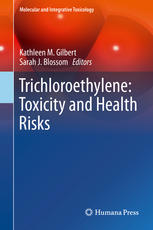

Most ebook files are in PDF format, so you can easily read them using various software such as Foxit Reader or directly on the Google Chrome browser.
Some ebook files are released by publishers in other formats such as .awz, .mobi, .epub, .fb2, etc. You may need to install specific software to read these formats on mobile/PC, such as Calibre.
Please read the tutorial at this link: https://ebookbell.com/faq
We offer FREE conversion to the popular formats you request; however, this may take some time. Therefore, right after payment, please email us, and we will try to provide the service as quickly as possible.
For some exceptional file formats or broken links (if any), please refrain from opening any disputes. Instead, email us first, and we will try to assist within a maximum of 6 hours.
EbookBell Team

5.0
70 reviewsA comprehensive overview of the effects of trichloroethylene toxicity caused by real-life exposure levels highlighting how exposure to trichloroethylene may contribute to the etiology of several idiopathic human diseases. Discussion will focus on different kinds of modeling and how they may be used to predict functional consequences and to dissect the contribution of different mechanistic pathways, including potential mechanisms of action for trichloroethylene toxicity in different organ systems. It will explore the role of epigenetic alterations in trichloroethylene toxicity, this provides important mechanistic information and may also provide the basis for intervention therapy. Chapters will also explain how the risks from trichloroethylene exposure may be greater in certain populations based on genetic predisposition, age of exposure and co-exposure to other chemicals With contributions from international experts in the field, Trichloroethylene: Toxicity and Health Risks is an essential resource for researchers and clinicians in toxicology, immunology, medicine and public health as well as industry and government regulatory scientists involved in safety and health protection and epidemiologists, highlighting the need for interdisciplinary cooperation in solving issues of environmental toxicity.